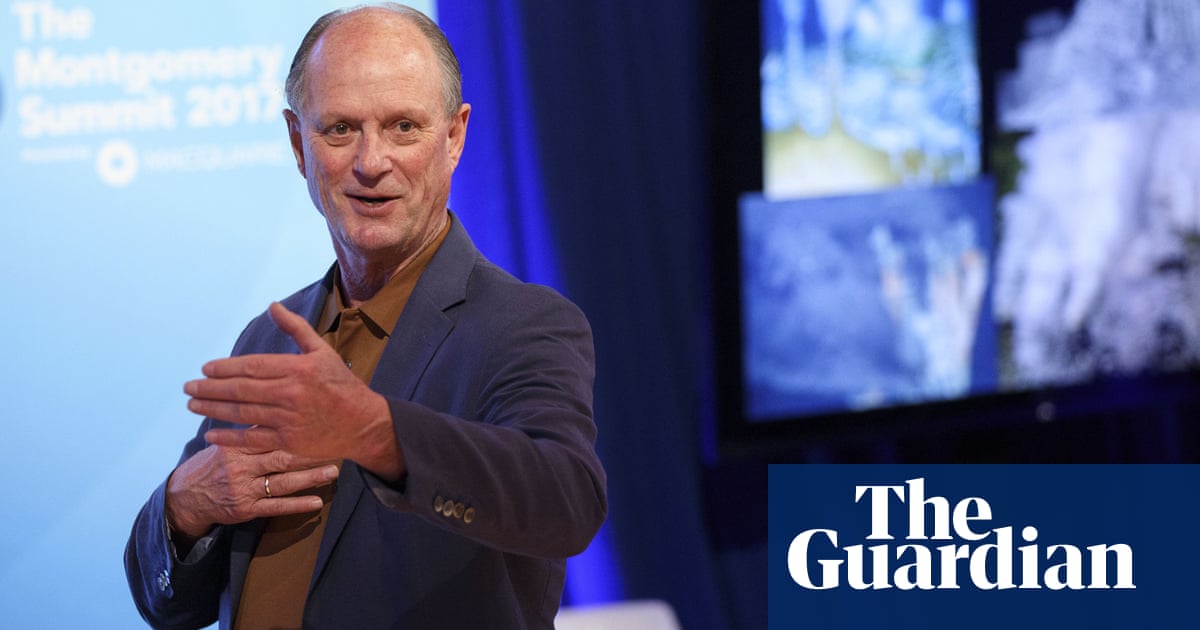The mid-ocean ridge is where the Earth creates its outer skin. Itâs called the boundary of creation. We knew there was life on the bottom of the ocean but not entire ecosystems supporting large animals until our expedition went down there in 1977.
First, we sent down an unmanned vehicle called Angus, which was essentially a camera system and strobe lights within a two-tonne steel cage. It was going down in the eternal darkness, slaloming back and forth like a skier down a mountain.
We were exploring the longest mountain range on Earth â the mid-ocean ridge. We were looking for heat, and we theorised that there would be vents in the ridge, but we never expected to see large concentrations of life. After 12 hours of taking thousands of photos, Angus came back up.
When we studied the photos we found that at about 2,500 metres deep, where we had detected a sudden increase in temperature, the water got cloudy. Then we suddenly saw clams â giant clams the size of dinner plates â and tube worms that were two or three metres tall.
It was like finding an oasis of life in the Sahara; it was like a rose garden. The room exploded with excitement onboard the ship when we saw the images. Scientists become children when they discover something â it was like we never left middle school.
The discovery solved the mystery of how life got a foothold on the planet, and it has led people to believe there is even more likely to be life elsewhere in our solar system. But we were not expecting to find a large ecosystem of life â we were all geologists.
We invited biologists but they didnât want to go because they said thereâs nothing going on there. We constantly remind them they werenât there when we made this historic biological discovery; we have to rub it in.
The next morning, three people went down in a submersible to the spot where we had photographed the clams the day before to bring up samples. The pressure hull within the deep diving vehicles we used was tiny. Ours was about two metres in diameter and we stuffed three people in there. It was like working inside a Swiss watch.
When we brought the clams up to the surface, we realised they were functioning like no other organism we had seen before. When we opened them, we found that they had human-like blood. They looked more like beef than a clam â they werenât white but red, full of haemoglobin and fleshy on the inside.
Youâd expect this blood to be circulating nutrients and other resources between organ systems, and yet, unlike most clams, they had no internal organs, no mouths. It was a mystery how they were feeding themselves.
We looked under the microscope and found this very ancient bacterium, which wasnât even named at the time, living inside their bodies. It turned out the clams were being fed by the bacterium. I called a friend and tried to describe to him what we were seeing, and he said: âThatâs impossible.â I said: âIâm holding it in my hand.â
It was really funny because scientists usually talk constantly, and no one was talking. Everyone was trying to process it, thinking: âI donât know what I just saw.â It was dumbfounding.
We didnât really start to understand what was going on until we opened our water sample back on the ship. It was so strong in hydrogen sulphide â a corrosive gas that smells of rotten eggs â we had to open the portholes. We realised what we had found at the bottom of the ocean was a hot spring that had a chemistry that triggered life.
We were always taught that life had to live in a very narrow pH, and all of a sudden we were finding life in a very acidic environment. We realised that these clams and tube worms were actually ingesting the chemistry of the vents, using it as fuel. Their bacteria were harnessing the energy of hydrogen sulphide to fix carbon.
That just blew the socks off science because we had been told that all life on Earth of any major megafauna was due to photosynthesis. It proved that life can exist in much more hostile environments than we thought.
Underwater exploration has been my lifeâs work â Iâve done more than 170 deep-sea expeditions over a career of more than six decades.
I was born in Kansas. Iâm the first of 13 generations of my family in America to go to college. When I discovered the Titanic in 1985, I became a big celebrity and went on all the talkshows. Days later my mom called and said: âWe watched you on all the TV shows, and all the neighbours are calling, but son,â she said, âItâs too bad you found that rusty old boat. You discovered hydrothermal vents, but theyâre only going to remember you for finding that old boat.â
And moms are never wrong ⦠finding hydrothermal vents beats the hell out of finding the Titanic.
It helped us understand how life got a grip on this planet and how it could be elsewhere too. It opens the doors to life and intelligent life throughout the universe. When you look up at the galaxies, wave, because theyâre waving back at you. Jupiterâs moon Europa and Saturnâs moon Enceladus have oceans far larger than ours. There should be life in those oceans. I hope we can get over there, but it would not be a place you want to live. There is no plan B for the human race.
As told to Phoebe Weston
-
Robert Ballard is a professor of oceanography at the University of Rhode Island, president of the Ocean Exploration Trust and explorer-at-large at the National Geographic Society. The expeditions he has led include the discovery of the RMS Titanic in 1985.



